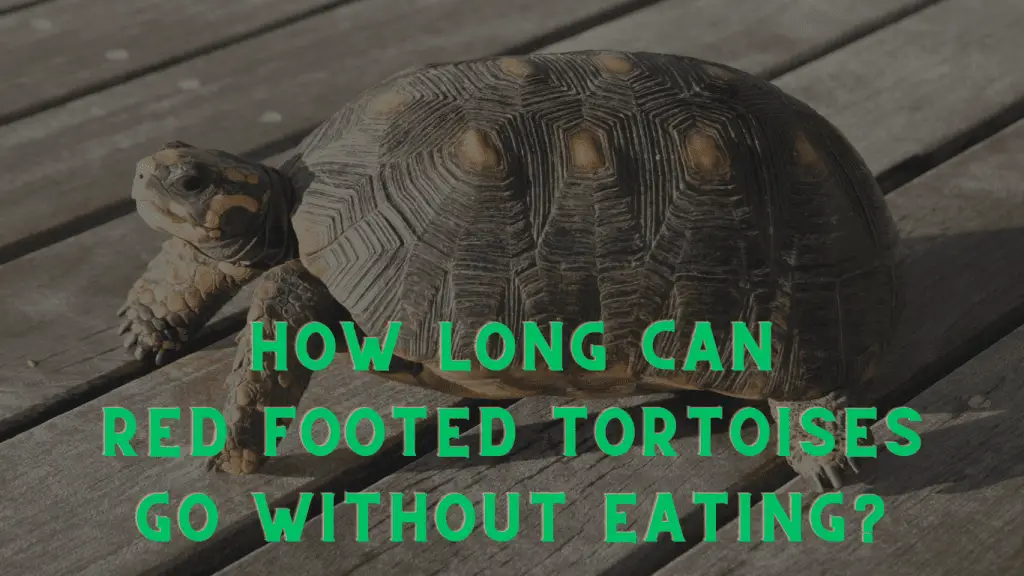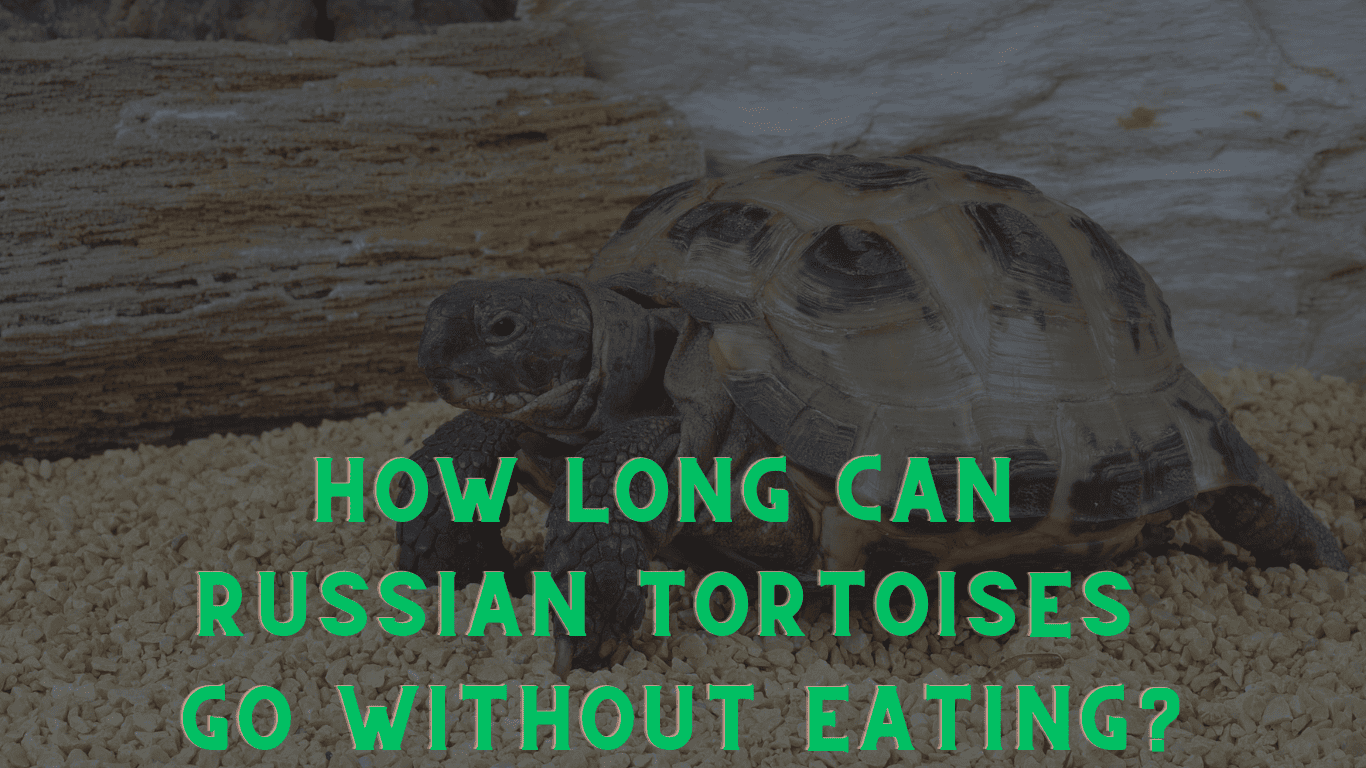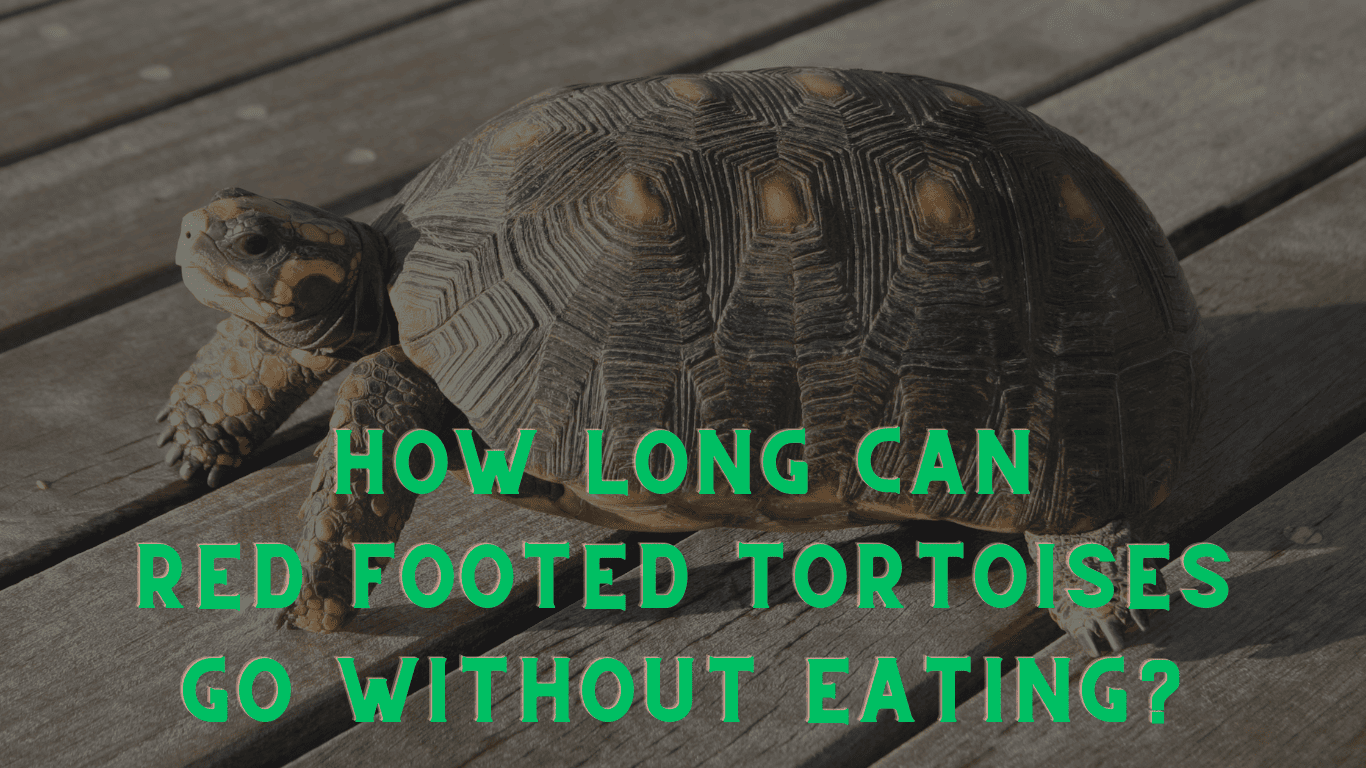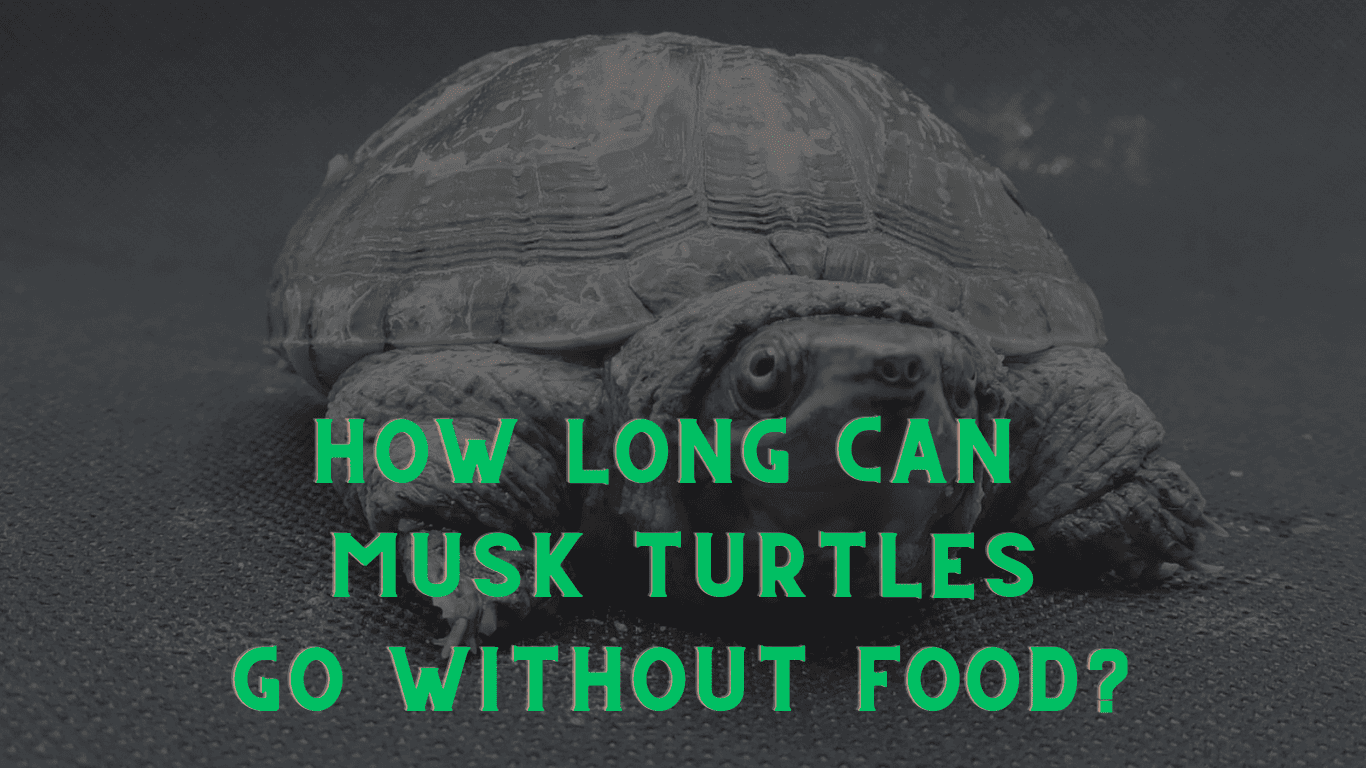On average, a Red-footed tortoise can survive without food for approximately 3 months (90 days). This timeframe, however, can vary depending on numerous factors including the tortoise’s age, size, the climate it lives in, and the availability of water. A healthy red-footed tortoise can extend this period from weeks to months without additional meals, based on these same variables.
In rare cases and under specific conditions, a red-footed tortoise can even manage to go without food for as long as two to three years, as suggested by a veterinarian in Rio de Janeiro.
Nonetheless, it’s crucial to note that the ability to survive without food doesn’t equate to thriving. Red-footed tortoises need a balanced diet for their overall health and well-being. Even though an adult tortoise can survive between 3 to 6 months without food, constant access to water is absolutely essential.
With a sufficient water supply, a healthy red-footed tortoise can endure without food and water for more than six months. However, it’s strongly advised not to withhold food from them for extended periods, ensuring they receive the nutrients needed for a healthy life.
| Dietary Aspect | Description |
|---|---|
| Dietary Type | Red-footed tortoises are herbivores, and their diet includes grasses, fruits, vegetables, and some animal protein. |
| Safe Food Options | Dark leafy greens (kale, collard greens, spinach), Squash, carrots, sweet potatoes, fruits (berries, melons, apples). |
| Supplement Requirements | Calcium supplements such as cuttlebone or calcium powder is necessary for proper shell growth and health. |
| Feeding Frequency | Red-footed tortoises should be provided with fresh food daily. Juvenile tortoises should be fed twice a day, while adult tortoises can be fed once a day. |
| Effects of Not Eating | Not eating can lead to stress, malnourishment, and fat loss in red-footed tortoises. This can further lead to weakness, lethargy, and a weakened immune system. |
| Factors Influencing Food Intake | Enclosure size, temperature and humidity, veterinary care, water availability, substrate, pellet type, and lighting can all influence a tortoise’s food intake. |
| Special Dietary Considerations | A well-balanced diet of pellets, fruits and vegetables, occasional animal protein, a balance of calcium and phosphorus, and clean water access is crucial for a red-footed tortoise’s health. |
| Reproduction and Diet | Red-footed tortoises are omnivores, requiring a varied diet for overall health and successful reproduction. Females need a suitable nesting area for egg-laying. |
| Geographical Influence on Diet | The tortoises’ natural habitat, which can be rainforests or savanna regions of South America, influences their diet as availability of food sources varies per region. |
Red Footed Tortoises’ Dietary Needs
Red-footed tortoises are herbivorous species that require a specific diet to maintain a healthy life. As a pet tortoise, it is important to understand their dietary needs to provide them with the proper nutrition.

In the wild, red-footed tortoises eat a variety of plant matter, including grasses, fruits, and vegetables. They also consume some protein, such as insects and snails. However, as a pet, it is best to avoid feeding them animal protein and stick to a plant-based diet.
When feeding a red-footed tortoise, it is important to provide a balanced diet that includes a variety of vegetables and fruits. Some safe options include:
- Dark leafy greens such as kale, collard greens, and spinach
- Squash, carrots, and sweet potatoes
- Fruits such as berries, melons, and apples
It is also important to provide a calcium supplement, such as cuttlebone or calcium powder, to ensure proper shell growth and health.
While red-footed tortoises can go weeks without eating, it is important to provide them with fresh food daily to maintain their health. Overfeeding can also lead to obesity and health problems, so it is important to monitor their intake and adjust accordingly.
What Do Red Footed Tortoises Eat
Red footed tortoises are omnivores, which means they eat both plant and animal matter. A well-balanced diet is essential for their health and longevity. Here are some of the foods that red footed tortoises can eat:
Vegetables and Fruits
Red footed tortoises love to eat vegetables and fruits. Some of the vegetables they can eat include lettuce, kale, broccoli, squash, and sweet potatoes. They can also eat a variety of fruits, including mulberries, oranges, dates, bananas, and raisins. It is important to note that fruits should be given in moderation due to their high sugar content.
Calcium-Rich Foods
Calcium is an essential nutrient for red footed tortoises. They need it to maintain healthy bones and shells. Some calcium-rich foods that they can eat include dandelion greens, collard greens, and turnip greens. Calcium supplements can also be added to their diet.
Grasses and Leaves
Red footed tortoises also eat grasses and leaves. They can eat a variety of grasses, including Bermuda grass and Timothy grass. They can also eat leaves from plants such as hibiscus, rose, and mulberry.
Protein-Rich Foods
Protein is important for red footed tortoises, especially for growing hatchlings. They can get protein from foods such as mushrooms, carrots, and corn. They can also eat animal matter such as cooked chicken or insects.
Other Foods
Red footed tortoises can also eat other foods such as pumpkin, tomato, lime, and romaine lettuce. However, it is important to avoid feeding them foods that are high in oxalates, such as spinach and beet greens, as these can block calcium absorption.
Frequency of Feeding
When it comes to feeding red-footed tortoises, it is important to provide them with a balanced diet that is rich in nutrients. Red-footed tortoises are herbivores and they require a diet that is high in fiber, vitamins, and minerals. It is recommended that they are fed daily with a variety of fruits and vegetables.
The frequency of feeding can vary depending on factors such as age, size, and gender. Juvenile red-footed tortoises require more frequent feedings than adult tortoises. As a general rule, juvenile tortoises should be fed twice a day, while adult tortoises can be fed once a day.
It is important to monitor the amount of food that your red-footed tortoise is consuming. Overfeeding can lead to obesity and various health issues. A balanced diet is essential for the health and well-being of your tortoise.
Female red-footed tortoises may require more frequent feedings during the breeding season, as they need to build up their energy reserves for egg production. It is important to provide them with a calcium-rich diet during this time.
Effects of Not Eating
Red-footed tortoises can survive for up to three months without food, but it is not recommended to deprive them of food for extended periods. If a tortoise is not eating, it can have several negative effects on its health.
One of the most significant effects of not eating is stress. Tortoises that are not eating can become stressed, which can lead to a variety of health problems. Stress can also make it difficult for a tortoise to move around, which can further exacerbate health problems.
Another negative effect of not eating is health problems. Tortoises that are not eating can become malnourished, which can lead to a variety of health problems. These health problems can include weakness, lethargy, and a weakened immune system.
If a tortoise is not eating, it may also begin to lose fat. This can make it difficult for the tortoise to survive for extended periods without food. Additionally, if a tortoise is not eating, it may not be able to move around as much, which can lead to further health problems.
Factors Influencing Food Intake
The amount of time a red-footed tortoise can go without food can vary depending on a variety of factors. Here are some of the key factors that can influence their food intake:
Enclosure
Red-footed tortoises need a spacious enclosure to move around and exercise. A cramped enclosure can lead to stress, which can cause a decrease in appetite.
Temperature and Humidity
Temperature and humidity are critical factors for a tortoise’s health. They need a warm and humid environment to thrive. If the temperature or humidity levels are not optimal, it can lead to a decrease in appetite.
Vet Care
Regular veterinary check-ups are essential for the overall health of a red-footed tortoise. If they are experiencing any health issues, it can lead to a decrease in appetite.
Water
Red-footed tortoises need access to clean water at all times. Dehydration can lead to a decrease in appetite, so it’s important to ensure that they are drinking enough water.
Substrate
The substrate in a tortoise’s enclosure can also impact their appetite. A substrate that is too rough or sharp can cause discomfort, leading to a decrease in appetite.
Pellets
Pellets are an essential part of a red-footed tortoise’s diet. If they are not provided with the right type of pellets or the right amount, it can lead to a decrease in appetite.
Lighting
Lighting is crucial for a tortoise’s health. They need access to UVB lighting to help them absorb calcium and maintain healthy bones. If they are not getting enough UVB lighting, it can lead to a decrease in appetite.
In conclusion, several factors can influence a red-footed tortoise’s food intake. Providing a spacious enclosure, optimal temperature and humidity levels, regular vet care, clean water, the right substrate, pellets, and lighting can help ensure that they maintain a healthy appetite.
Special Dietary Considerations
When it comes to feeding your red-footed tortoise, there are some special dietary considerations that you should keep in mind. A well-balanced diet is essential to maintain your tortoise’s health and longevity. Here are some things to keep in mind:
- Pellets: Pellets should be the mainstay of your tortoise’s diet. Look for pellets that are specifically formulated for red-footed tortoises. These pellets should contain all the necessary vitamins and minerals that your tortoise needs to stay healthy.
- Fruits and Vegetables: In addition to pellets, your tortoise should also be given a variety of fruits and vegetables. Some good options include turnip greens, kale, dandelion greens, and collard greens. Fruits like papaya, mango, and bananas are also great choices. Be sure to remove any uneaten fruits and vegetables from the enclosure to prevent spoilage.
- Animal Protein: While not strictly necessary, some animal protein can be beneficial for your tortoise. Offer small amounts of cooked chicken, turkey, or fish as a treat. Avoid feeding your tortoise red meat or any processed meats.
- Calcium and Phosphorus: Red-footed tortoises require a balance of calcium and phosphorus in their diet. Calcium is necessary for healthy bone structure, while phosphorus can interfere with calcium absorption. Be sure to offer a calcium supplement in addition to a balanced diet.
- Water: Your tortoise should always have access to clean drinking water. Place a shallow dish of water in the enclosure and change it daily. Avoid using deep bowls that your tortoise could fall into and drown.
By following these dietary guidelines, you can help ensure that your red-footed tortoise stays healthy and happy. Remember to always provide fresh food and clean water, and never feed your tortoise anything that could be harmful.
Reproduction and Diet
Red-footed tortoises are omnivores, which means they eat both plant and animal matter. Their diet typically consists of fruits, vegetables, and insects. In the wild, they have been known to eat fallen fruit, flowers, and even carrion. In captivity, it is important to provide them with a varied diet that includes calcium supplements to ensure healthy shell growth.
When it comes to reproduction, red-footed tortoises are known to lay eggs. Females will dig a nest in the ground, typically in a sunny location, and lay between 3 and 12 eggs. The eggs take about 100 days to hatch, and the hatchlings are fully independent from birth. In captivity, it is important to provide a suitable nesting area for females to lay their eggs.
Geographical Influence on Diet
The natural habitat of the Red-Footed Tortoise is the South American rainforest, where they have access to a diverse range of foliage, fruits, and flowers. In the wild, their diet consists of a variety of vegetation, including leaves, flowers, fruits, and some insects. Their diet is heavily influenced by their geographical location, as the availability of food sources varies depending on the region.
Red-Footed Tortoises found in the savanna regions of South America have a slightly different diet than those found in the rainforest. These tortoises have adapted to the drier environment and consume more grasses and other vegetation found in the savanna. However, their diet still consists mainly of fruits and vegetables.
Yellow-footed tortoises, a close relative of the Red-Footed Tortoise, have a similar diet to their red-footed counterparts. However, they are known to consume more insects and carrion than the Red-Footed Tortoise.
The legs of the Red-Footed Tortoise are not used for digging, so their diet is not influenced by the depth of the soil. Instead, they rely on their strong jaws to break down tough vegetation.
In conclusion, the geographical location of the Red-Footed Tortoise plays a significant role in their diet. Their diet consists mainly of vegetation, but their specific food sources can vary depending on their region. Despite this variation, their diet remains largely consistent across their range.




Leave a Reply